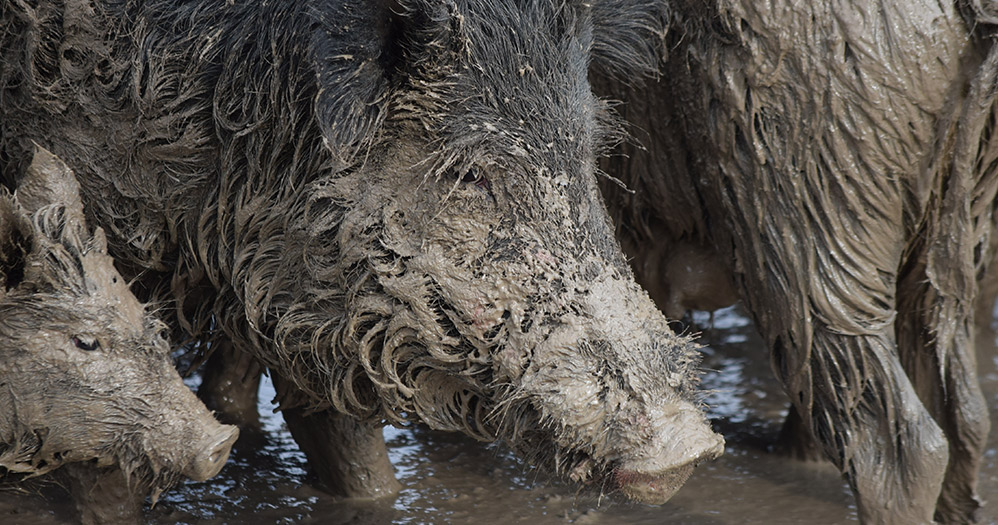Wild Hogs, the Ultimate Predator?
2/20/2018 9:18:47 AM
From MDWFP

When we think of the word “predator,” certain images are conjured up in our minds of a lioness waiting patiently on the African Savannah for an impala to stray too far from the herd, or a shark lurking in the depths waiting to explode into a school of un-suspecting fish. However, the term predator, by its definition extends much further into an ecological role than where most people think. Merriam-Webster defines a predator as “one that preys, destroys, or devours.” As a matter of fact, the word predator originates from the Latin “praedator” meaning “plunderer.” A wild hog, while lacking the stereotype of what we think a predator should look like, definitely fits the bill by definition.
So, what makes this predator such a threat to its surrounding habitat? Wild hogs are considered opportunistic omnivores, which basically means they can (and do) eat almost anything they happen to come across. Dietary studies in the Southeast have found organisms such as mussels, lizards, frogs, turtles, eggs, armadillos, snakes, and carrion in the stomachs of hogs. While most of a hog’s diet is plant matter, researchers and wildlife officials have also confirmed that wild hogs will feed on alligator and sea turtle eggs, ground-nesting bird eggs such as waterfowl and wild turkey, and even small mammals such as white-tailed deer fawns. Even though there is much more research to be done to know the full scope of what a wild hogs will prey upon, the list of what they won’t eat will certainly be shorter.
In addition to their inclusive food choices, wild hogs have voracious appetites. In fact, wild hogs eat 3-5% of their total body weight every day. This means that a 200lb hog will consume about 3 tons of food per year. Keep in mind, this 3 tons of material is made up of either food that other wildlife on the landscape would otherwise be able to use or it is other wildlife on the landscape. Now, imagine how much a sounder of 12 wild hogs eats per year and you can see the “destroy” and “devour” descriptions really come into focus. When we consider how much havoc wild hogs can wreak on their habitat, it is easy to understand how easily the term “predator” can be applied. There are not many species that can enter an ecosystem and destroy it from top to bottom, but the wild hog has been doing in North America it since 1539.









